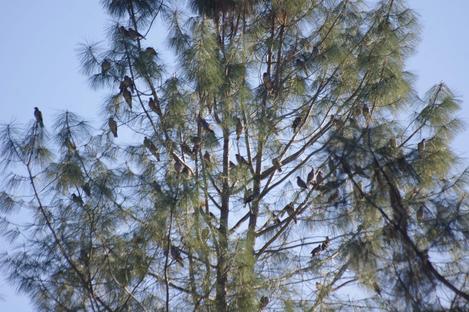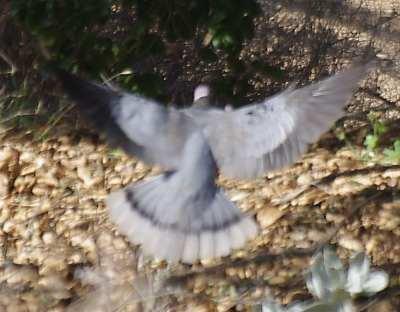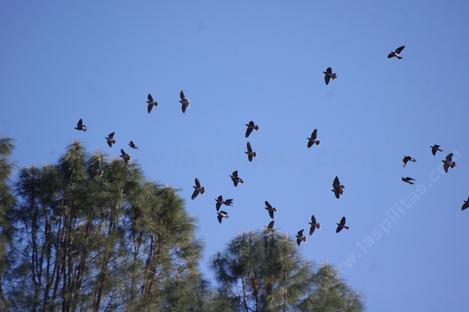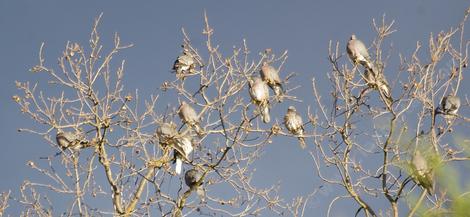Band-tailed Pigeon, Columba fasciata
Nesting habitats used by the Band-tailed Pigeon
The Band-tailed Pigeon likes to nest in tall trees. However, they like brush understory for breeding.
Diet of the Band-tailed Pigeon
The Band-tailed Pigeon eats mainly acorns but also consumes other fruits. Their staple foods include Oaks and Madrones, also to a lesser extent Choke cherry, Toyon, Dogwood, Elderberries and Manzanitas. They consume buds and flowers as well as berries and seeds.
Habitat/ Plant community used by the Band-tailed pigeon
The Band-tailed Pigeon likes wooded areas with the dense understory.
Plant community links:
Agricultural lands with grains
Migration of the Band-tailed Pigeon
Individuals tend to move south in winter and back north in summer. They also tend to move around looking for food.
Range of the Band-tailed Pigeon
The Band-tailed Pigeon is found in most of California except in Central California Valley or deserts.
How to attract the Band-tailed Pigeon to your garden
Band-tailed Pigeons need a tall snag for perching and cooing. Their cooing can be a nice addition to the tranquility of your garden. They also need oaks as they produce large quantities of acorns. However, in our area ( San Luis Obispo county) many of the Coast live oaks as well as other species are not producing good acorn crops. This can either be caused by a dry year or an unhealthy oak tree. Make sure your oak trees have a good leaf layer under the drip line, 4 inches or more. Also make sure there is no grass or other non native weeds under the drip line of the oak. These weeds take needed nutrients and water and increase fire danger. The weeds also mess up the soil ecology needed by oaks.








